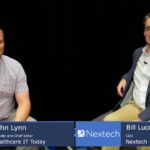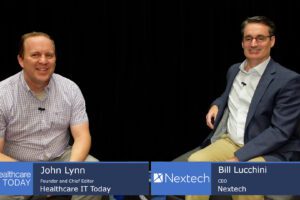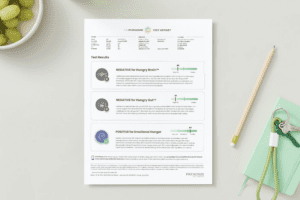Welcome to our Healthcare IT Today Weekly Roundup. Each week, we’ll be providing a look back at the articles we posted and why they’re important to the healthcare IT community. We hope this gives you a chance to catch up on anything you may have missed during the week.
Driving Patient Behavior and Connecting Patients With Care Teams. Patients are embracing the notion of monitoring their health every day, but health systems aren’t, John Lynn discovered in a chat with Rich Steinle and Scott Pradels at Carium. The conversation also covered how to remove barriers to adoption of remote monitoring technology. Read more…
How Will Data Utilities Evolve? We asked this question to the Healthcare T Today community at the recent Civitas Conference. Experts agreed that health data utilities are in their early stages but will start to see additional value when they engage with government agencies in their communities and enable data sharing across state lines. Read more…
Understanding Social Determinants of Health. In the first post in a series, Andy Oram described how data can can both call out SDoH and help to address its effects. This becomes increasingly important as value-based care models take hold and more providers are judged on their ability to address non-clinical effects of clinical outcomes. Read more…
Defining and Sharing SDoH. It’s difficult to address SDoH if you don’t understand what they are, Andy noted in his second post. Definitions for SDoH vary and are often changing. Meanwhile, sharing SDoH data often proves difficult because it’s captured in free-text notes that lack a standard format and can’t easily be abstracted. Read more…
Collecting and Processing SDoH Data. In his third post, Andy discussed why collecting and processing SDoH is so labor intensive (because clinicians have to speak to patients) and whether data obtained from insurers or consumer databases is valuable in a clinical setting. Read more…
Acting on SDoH Analysis. Andy’s fourth installment outlined services that connect patients to resources in their community, whether through automated outreach, surveys, and referrals or a more holistic and hands-on approach focused on direct conversations with patients. Read more…
Exploring Specific Types of Help to Address SDoH. In his final post, Andy explored a range of solutions that help patients receive financial assistance, find a job, obtain medications, and increase their access to healthy food. The biggest challenge isn’t necessarily convincing clinicians to adopt these solutions, he concluded: It’s convincing them that they need to address SDoH in the first place. Read more…
Verato, CLEAR Come Together to Accelerate Adoption of Digital Identities in Healthcare. In a conversation from HLTH, Joaquim Neto at Verato and David Bardan at CLEAR discussed why they embarked on a collaboration to improve patient identity management. Read more…
Empowering All Patients with Digital Accessibility. Digitization often has the unintended consequence of putting up barriers for patients with disabilities, John learned in a chat with Matt Ater at TPGi. Ater said accommodations for patients with disabilities need to be as common as wheelchair ramps. Read more…
The Benefits – and Challenges – of Public, Private, and Multi Cloud. We asked the Healthcare IT Today community to weigh in on cloud deployment models. While there’s a lot for organizations to consider, issues such as security, interoperability, scalability, and complexity all impact the choice of the preferred cloud deployment model. Read more…
Profile of a New Health Data Exchange Company. John sat down with Jared Jeffrey, a KLAS Research alum who founded healthKERI after a health scare. The company is based on the KERI protocol for decentralized data exchange, which makes it different from existing operability standards. Read more…
Healthcare IT Today Podcast: The Women’s Health IT Landscape. Brittany Quemby joins John to talk about two important topics for digital health tools for women: How tools need to optimize specific women’s health needs and how developers can build tools to address the disparities in care that women face. Read more…
How Communication Platforms Can Harness Generative AI in a HIPAA-Compliant Way. As organizations roll out technology to streamline workflows and relieve administrative burdens, they must be sure to get patients’ content to use generative AI and embrace federated learning, which trains AI models without disclosing medical records, noted Nate MacLeitch, Founder and CEO at QuickBlox. Read more…
Finding a Health Equity Partner for Language Services. Organizations that don’t provide language access to limited English proficiency patients face compliance issues, not to mention frustrated staff and patients. As leaders assess their language services, Merrie Wallace at Boostlingo recommended a closer look at capacity, quality, and protocols. Read more…
Healthcare Organizations Can Reduce Risk Thanks to Zero Trust. While zero trust can improve security and support compliance, zero trust can disrupt clinical operations without the right level of planning and implementation, according to Peter Newton at Fortinet. Read more…
Generative AI Requires a Focus on Caregivers and Patients. Healthcare organizations want to get more value from the data they already have, noted Tina Manoharan at Philips. That’s why the best use cases for generative AI help them analyze existing data or gather data they’re required to have. That also makes them easier to slot into existing workflows. Read more…
Bonus Features for October 15, 2023: 66% of orgs hit by cyberattacks report disruptions to patient care, while 75% of Americans don’t trust AI in a care setting. Read more…
Funding and M&A Activity:
- Cigna subsidiary Evernorth acquired Bright.MD, which it plans to use to provide asynchronous care in its MDLIVE virtual care offering.
- Netsmart acquired of Netalytics, which makes addiction treatment and practice management software for substance use disorder providers.
- LGI Healthcare Solutions acquired Boston Software Systems, maker of robotic process automation solutions.
- Predictive risk platform vendor Health Data Analytics Institute announced $31 million in oversubscribed Series C funding.
- Women’s midlife care company Midi Health raised $25 million in Series A funding.
Thanks for reading and be sure to check out our latest Healthcare IT Today Weekly Roundups.













